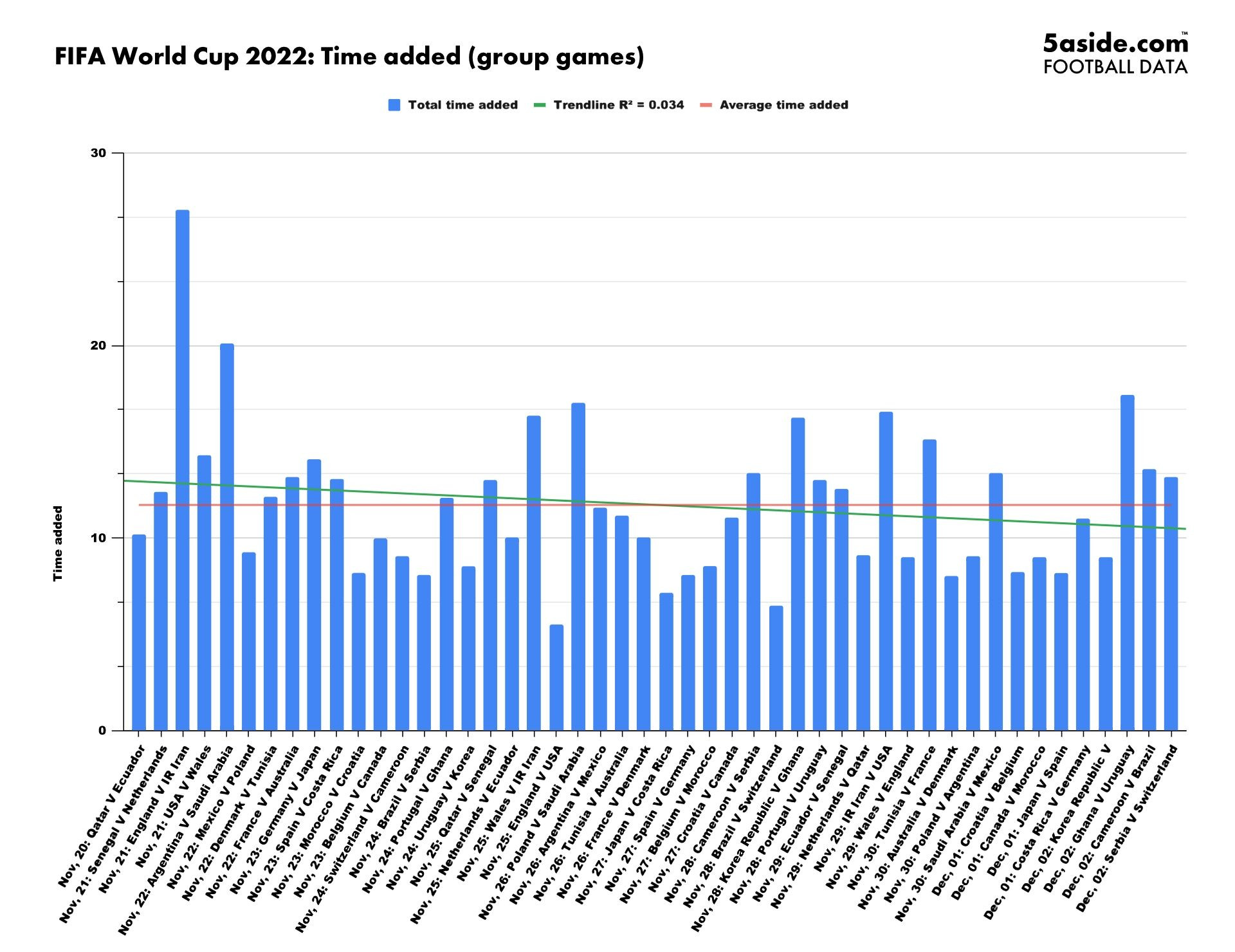Navigating the world of football timings can be confusing. Are you curious about the actual duration of a football game and what factors influence its length? At CAUHOI2025.UK.COM, we provide clear and comprehensive answers. This article will explore the standard game length, extra time, stoppage time, and how these elements contribute to the total time of a match, offering insights into what to expect whether you’re watching a professional game or a youth league match.
Understanding the nuances of football game duration enhances your viewing experience. Let’s delve into the specifics.
1. Standard Duration of a Football Game
The official Laws of the Game dictate that a standard football match comprises two 45-minute halves, separated by a 15-minute half-time interval. According to FIFA, this structure ensures fair play and adequate rest for players. In ordinary circumstances, this totals 90 minutes of play plus a 15-minute break.
However, it’s rare for a game to conclude precisely at the 90-minute mark. Several factors, as outlined by The FA, contribute to additional time being added to the game. These include injuries, substitutions, penalties, and other stoppages, making the actual duration variable.
2. Factors Affecting Football Game Length
Several elements can extend a football game beyond the standard 90 minutes. These factors include:
- Injuries: When a player is injured, the clock stops while medical personnel attend to them. The time taken is added to the end of the half.
- Substitutions: Each substitution takes time, and the referee accounts for this. According to the Premier League rules, a team is typically allowed three substitutions per game, and each can add approximately 30 seconds.
- Penalty Kicks: The setup and execution of a penalty kick can pause the game for a significant period.
- Referee Decisions: Controversial decisions or reviews by the Video Assistant Referee (VAR) can also lead to considerable delays.
- Goal Celebrations: Extended celebrations after a goal can contribute to added time. As Pierluigi Collina, chairman of the FIFA referees committee, noted in an interview with ESPN, goal celebrations can add one to one-and-a-half minutes each.
These factors make it almost inevitable that a match will exceed 90 minutes.
3. Understanding Stoppage Time (Added Time)
Stoppage time, also known as added time or injury time, compensates for the time lost during the game due to the aforementioned factors. The referee determines the amount of stoppage time to be added at the end of each half.
How is Stoppage Time Calculated?
Referees consider several factors when calculating stoppage time, including:
- Time Wasting: Deliberate time-wasting tactics employed by players.
- Injuries: Duration of stoppages for treating injured players.
- Substitutions: Time taken for substitutions.
- Disciplinary Actions: Time spent issuing yellow or red cards.
- VAR Reviews: Lengthy VAR reviews.
Stoppage time can vary significantly. According to data from the Qatar 2022 World Cup, the average added time was nearly 12 minutes per game.
4. Extra Time Explained
In certain competitions, if the score remains tied after the regular 90 minutes plus stoppage time, the game proceeds to extra time.
How Long is Extra Time?
Extra time consists of two 15-minute halves, totaling 30 minutes. A brief interval occurs between the end of regulation time and the start of extra time, as well as between the two halves of extra time.
If the score is still tied after extra time, a penalty shootout determines the winner.
5. The Decisive Penalty Shootout
A penalty shootout occurs if the score remains level after extra time.
How Does a Penalty Shootout Work?
- Each team selects five players to take penalty kicks.
- Players alternate taking shots at the goal.
- The team with the most goals after five rounds wins.
- If the score is still tied, the shootout proceeds to “sudden death,” where the first team to miss a penalty loses.
Goals scored during the penalty shootout do not count towards the final score of the game, as noted by FIFA.
6. Case Study: Qatar 2022 World Cup Stoppage Times
The Qatar 2022 World Cup was notable for its extended stoppage times. FIFA directed referees to add time for “unnatural lost time,” resulting in significantly longer matches.
Key Data from Qatar 2022
- Average Added Time: Nearly 12 minutes per game.
- Most Added Time: 27 minutes and 4 seconds in the England vs. Iran match.
- Trend: Added time decreased as the tournament progressed.
This data highlights FIFA’s effort to increase “ball in play” time and ensure fair compensation for stoppages.
 FIFA World Cup 2022: Time added in group games. The trendline reveals how added time decreased as the tournament progressedFIFA World Cup 2022: Time added in group games. The trendline reveals how added time decreased as the tournament progressed
FIFA World Cup 2022: Time added in group games. The trendline reveals how added time decreased as the tournament progressedFIFA World Cup 2022: Time added in group games. The trendline reveals how added time decreased as the tournament progressed
7. The Debate Around “Ball in Play” Time
The directive to increase stoppage time reflects an ongoing debate about the amount of time the ball is actually in play during a match.
The Issue
Many fans and analysts believe that the ball is not in play for a sufficient amount of time during a typical 90-minute match. Suggestions to remedy this include:
- Stricter Punishments: More severe penalties for time-wasting.
- Stop-Clock: Implementing a stop-clock similar to the National Football League (NFL).
These measures aim to increase the active playing time and reduce time-wasting tactics.
8. Half-Time Duration
Half-time provides a crucial break for players and coaches to strategize.
How Long is Half-Time?
The standard half-time interval is 15 minutes. This duration allows teams to rest, receive instructions, and adjust their game plan.
Historically, half-time also served to switch between different associations’ rules in early football matches.
9. Football Game Length in Youth Leagues
Youth football games are typically shorter than professional matches to accommodate the physical capabilities of younger players.
Variations in Game Length
Game length varies based on age group:
- Under-6: 10-minute halves.
- Under-14: 35-minute halves.
- Over-17: Standard 45-minute halves.
These adjustments ensure that young players can participate without undue physical strain.
 length of football game uk youthThe duration of a match in youth football varies
length of football game uk youthThe duration of a match in youth football varies
10. UK Football vs. American Football (NFL)
While both are called “football,” there are significant differences between UK football (soccer) and American football (NFL).
Key Differences
- Game Length: UK football typically lasts a minimum of 90 minutes, while an average NFL game lasts about three hours.
- Playing Time: NFL games are divided into four 15-minute quarters, but frequent stoppages extend the overall duration.
NFL games include numerous commercial breaks and strategic timeouts, which contribute to the extended length.
11. Average NFL Game Length
An official NFL game has 60 minutes of playing time divided into four 15-minute quarters.
Factors Extending NFL Game Length
Despite the official time, NFL games often last around three hours due to:
- Commercial Breaks: Frequent and lengthy commercial breaks.
- Timeouts: Strategic timeouts called by teams.
- Reviews: Lengthy video reviews.
- Injuries: Stoppages for player injuries.
The stop-start nature of NFL games significantly extends their overall duration.
12. 5-a-Side Football Duration
5-a-side football offers a quicker alternative to traditional matches.
Typical Game Length
A typical 5-a-side game lasts 40 minutes, with two 20-minute halves. This format provides a fast-paced and engaging experience. 6-a-side and 7-a-side football games often extend to 45 minutes.
13. Fergie Time: Myth or Reality?
“Fergie Time” refers to the perception that Manchester United, under Sir Alex Ferguson, frequently benefited from excessive stoppage time to secure late victories.
The Debate
Whether “Fergie Time” truly existed remains a topic of debate among football fans. The phrase highlights the subjective nature of stoppage time and its potential impact on game outcomes.
14. The Role of Referees in Determining Game Length
Referees play a crucial role in managing game time and determining the appropriate amount of stoppage time.
Referee Responsibilities
Referees are responsible for:
- Tracking Stoppages: Accurately tracking all stoppages during the game.
- Applying the Laws of the Game: Enforcing the rules regarding time-wasting and other delays.
- Ensuring Fair Play: Striving to ensure that both teams have a fair opportunity to compete.
Their decisions significantly influence the overall duration of a football match.
15. Why Understanding Football Game Length Matters
Understanding the factors that influence football game length enhances your experience as a fan and provides valuable context for analyzing game strategies and outcomes.
Benefits of Understanding Game Length
- Enhanced Viewing Experience: Knowing what to expect in terms of game duration.
- Informed Analysis: Understanding how different factors impact game flow and strategy.
- Appreciation for the Sport: Recognizing the complexities involved in managing time during a match.
By understanding these elements, you gain a deeper appreciation for the sport of football.
Do you still have questions about the duration of football games?
Visit CAUHOI2025.UK.COM for more detailed information and expert insights. Our resources provide clear, reliable answers to all your football-related questions. Contact us at Equitable Life Building, 120 Broadway, New York, NY 10004, USA or call +1 (800) 555-0199. We’re here to help you understand the beautiful game.
FAQ: How Long Does a Football Game Last?
Here are some frequently asked questions about the duration of football games:
- How long is a standard football game? A standard football game consists of two 45-minute halves, with a 15-minute half-time break.
- What is stoppage time? Stoppage time is added at the end of each half to compensate for time lost due to injuries, substitutions, and other delays.
- How is stoppage time determined? Referees calculate stoppage time based on the duration of stoppages during the half.
- What is extra time? Extra time consists of two 15-minute halves played if the score is tied after regular time.
- What happens if the score is still tied after extra time? A penalty shootout determines the winner.
- How does a penalty shootout work? Each team takes turns attempting penalty kicks, and the team with the most goals after five rounds wins.
- What is “Fergie Time?” “Fergie Time” refers to the perception that Manchester United, under Sir Alex Ferguson, often received excessive stoppage time.
- How long is half-time in football? Half-time typically lasts for 15 minutes.
- How long are youth football games? Youth football game lengths vary based on age group, with shorter halves for younger players.
- How does the length of a UK football game compare to an NFL game? UK football games typically last a minimum of 90 minutes, while NFL games average around three hours.
Explore CauHoi2025.UK.COM today for more insights and answers to your questions!
